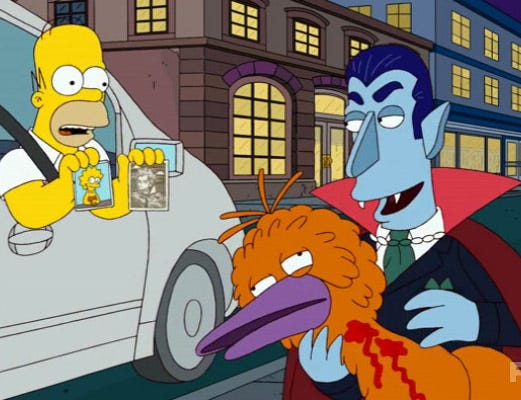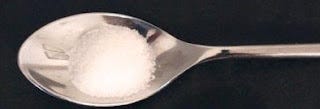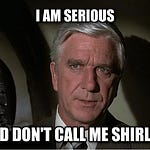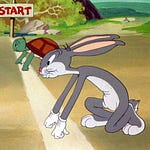Hey, gang!
It’s been a busy couple of weeks here in Big Dave’s world. The start of another mid-pandemic school year has kept me pretty busy, but I’m trying hard to stick to my eating and exercise plans — and sometimes I even succeed!
Unfortunately, my tricky brain had its own things going on, and that old stalker Epilepsy caught me off-guard last week.
As I mentioned in my book, I’ve been using a combination of medication and diet to try to control my seizures for the past three years. My doc switched me to a new medication earlier this year, and after this latest seizure, upped the dosage a bit. It’s sort of a trial-and-error process, really. Here’s hoping we’ve finally got it.
getting my keto mojo workin’
Then last weekend was the Low Carb USA conference, which I attended online. There were lots of great talks from the most influential names in the world of low-carb eating, including some of the folks that I’ve interviewed on my Healthy Happy Hour YouTube series, and each did a lengthy Q&A after their talk. It was a great way to recharge my mojo at a time when I really need some motivation.
One of the things that I’ve decided is to really start tracking seriously — I’d become a bit lax over the summer. My collection of gadgets has grown now to include a Freestyle Libre continuous glucose monitor (CGM), an Oura ring to track my sleep, and a Keto Mojo to measure my blood ketones. Now if I can just keep them all straight, I’ll be in business!
I’ll do reviews on each of these in the coming weeks, in case you’re interested in hearing about the life of the so-called quantified self, but let’s start with the CGM.
sweet, sweet blood
Carbohydrates — whether from the crystallized juice of a sugar cane or from the starch inside a potato — are turned into glucose by the digestion and transferred into the bloodstream. When there’s too much of that glucose floating around, it’s turned again into fat and stored in the gut or the butt. As I’ve said before, the whole idea of the low-carb diet is to cut off the supply and keep this from happening.
But how much glucose is too much?
I've always been curious about measurements (for example, how did the "bucket" become a standard unit of chicken?), so I decided to dig into this thing a little further.
According to trusty ol' WebMD, pre-diabetes occurs when fasting blood sugar is measured to be above 100 mg/dL. Diabetes proper starts at 126. But what does that mean, really? As a proud and ignorant American, I don't speak the language of grams and liters, not to mention milligrams or deciliters. (Come on, now, science!)
So I did some scrounging around, and I found newhealthguide.org and this visual of 1 gram of sugar:
100 milligrams is 0.1 grams, or 10% of the amount pictured above.
Ok, so what the heck is a deciliter of blood? Turns out it's about the size of a dixie cup.
...In other words, we’re really not talking about a lot of sugar. Try sweetening a small cup of coffee with 1/40 of a sugar packet, and chances are you'll barely taste a difference.
Now for a little fun with algebra (uh oh!): The average body has around 5 liters of blood — something you likely don't think about unless your name is Dexter. That means if your blood sugar is 100mg/dL, your entire circulatory system, head to toe, is holding only about one teaspoon of glucose!
It really makes you appreciate what a finely-tuned system the body is. The difference between “normal” blood glucose and full-on diabetes isn’t cupfuls or even spoonfuls of sugar. It’s basically a matter of whether your one teaspoon is level, rounded, or heaping.
la dolce vita
My own fasting blood glucose often comes in around 105 — not an emergency, but certainly not ideal. So my doc agreed to write a prescription for a CGM (even as she warned me that my insurance probably wouldn’t cover it).
A trip to the pharmacy, a little puzzling over the directions, and I managed to stick the small plastic disc to the back of my upper arm, where its tiny needle will sip at my blood day and night. An app on my cell phone enables me to check it any time I want just by holding the phone close to the disc.
The result? Information like this:
I can see from this graph, for example, that during my high-intensity SMaRT workout, my body turned some of my fat stores into blood glucose in order to fuel my maxed-out muscles (just as Dr. Ben said it would). I can also tell that I didn’t actually get away with that dark chocolate I snuck just before bed.
It’s a great accountability tool, but as he shared in his Low Carb USA presentation last weekend, Dr. Brian Lenzkes takes it one step further. Not only do his patients check their own CGM data, but that same information syncs remotely to Dr. Brian’s phone, so he gets pinged any time one of his people goes off plan. “I can call them up right away,” he says, “and ask them what’s going on.”
Always kind and understanding, Dr. Brian helps them troubleshoot their diet and lifestyle. “The elephant in the room?” he says, “Stress.” He shared that patients will sometimes see a blood sugar spike of 30 points or more, simply from a stressful meeting or presentation. Other times, stress will drive people to eat something sweet, and that shows up too.
Dr. Lenzkes also uses the CGM as a teaching tool: in his talk, he tells the story of a patient who asked which she should eat for breakfast, oatmeal or cereal. She tried both, and saw right away that cereal caused a much larger glucose spike (188) than oatmeal (143). “The right answer was none of the above,” he says. “The right answer for her was eggs,” which caused her blood sugar to remain flat. She went on to lose 22 lbs just by making that switch.
This combination of high-tech and high-touch is, I think, the future of medicine. Lifestyle diseases like obesity and diabetes respond well to lifestyle treatments like diet and exercise, but only when the patient is able to stay the course. And let’s face it, in our current, sugar-soaked food environment, staying the course is tough! Having a Jimminy Cricket right in your phone can be a powerful tool to keeping things going in the right direction.
If you’re interested in diving deep into low-carb knowledge, it’s still possible to register and access the recordings at lowcarbusa.org. But for a taste of what Dr. Brian is all about, click above for a “Big Dave’s Small Bites” podcast taken from my interview with Dr. Lenzkes.
Thanks for reading, and I look forward to more fun with data soon!














